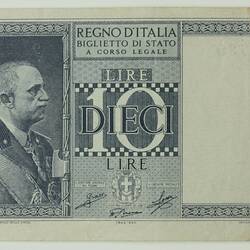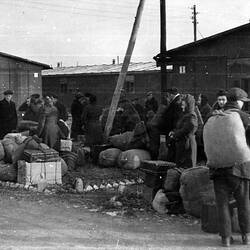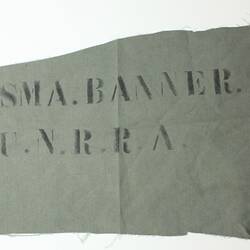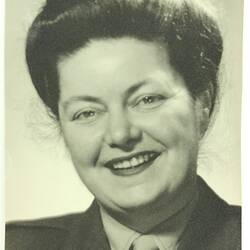Summary
Ten Lire bank note issued by Ministry of Treasury, Italy, 1944. One of ten paper bank notes from Czechoslovakia, France and Italy, collected by Esma Banner during her time working for the United Nations in Europe. Collection includes one 10 Franc note and two 2 Franc notes from France, one 10 Korun note and one 5 Korun note from Czechoslovakia, one 10 Lire note, one 5 Lire note and one 1 Lira note from Italy, and two 2 Lire notes issued by the Ministry of Treasury.
Esma Banner worked in displaced persons camps in the US zone of Germany after World War II as an employment and welfare officer for the United Nations Relief and Rehabilitation Administration (UNRRA), which later became the International Refugee Organization (IRO), from 1945 to 1951. Banner was one of 39 Australians who went to Germany to assist with post-war repatriation and re-settlement of refugees displaced by the war. More than 1000 displaced persons' camps were established by the Allied Forces. Initially created as temporary processing centres, the camps became longer term sites of accommodation, employment, education and recreation for refugees who could not, or did not want to, be repatriated to their countries of origin. Esma travelled to several countries around Europe for both work and recreation purposes.
Physical Description
Grey printed obverse with King Victor Emmanuel III in box at left with ornate border and on reverse with bust of Minerva on right hand side with ornate border.
Obverse Description
Bust of Victor Emmanuel III at left, in centre REGNO D'ITALIA BIGLIETTO DI STATO A CORSO LEGALE LIRE 10 DIECI and signatures and shield at bottom
Reverse Description
Statue bust of Minerva at right, in centre LIRE 10 DIECI LIRE, with serial numbers across top and bottom.
Significance
The Esma Banner World War II UN Worker Collection is an extensive and diverse collection of objects, documents, photographs and archival material which explores the experiences of an Australian woman working for the United Nations assisting in the relief and rehabilitation of millions of displaced people in Europe after World War II. Esma Banner served with the United Nations Relief and Rehabilitation Administration (UNRRA) and later with the International Refugee Organization (IRO) at displaced persons' camps in Germany from 1946 to 1951. She was one of fewer than 40 Australians employed by UNRRA and IRO during this period.
This collection recounts the often untold story of immigration from the perspective of a migration worker and enables the documentation of many themes relating to post World War II migration including life in the displaced person camps, international refugee management, creativity and cultural maintenance, and the political complexities of post-war resettlement. Of particular note are the craft items created by refugees living in displaced persons' camps. This collection holds a variety of men's and women's work, thus providing a significant insight into life within the camps. These objects also serve as valuable examples of cultural practices and traditional skills.
This collection and accompanying documentation presents a unique perspective of the post-World War II relief effort. Esma's diaries and letters in particular offer her personal insights and observations and demonstrate how civilians contributed to the reconstruction effort in Europe. In addition, these items add to the emerging collections of material describing women's involvements during times of conflict, as well as the larger narratives that illustrate Australia's wartime experience. After World War II hundreds of thousands of homeless, stateless or displaced people lived in camps before resettling in Western countries including Australia. This collection retains ongoing cultural relevance to these large migrant communities across Victoria and Australia. With the population of post-war displaced persons' survivors aging, the collection contributes to preserve their stories and experiences as part of a greater Australian migration narrative.
More Information
-
Collection Names
-
Collecting Areas
Numismatics & Philately, Migration & Cultural Diversity, Public Life & Institutions, Leisure
-
Acquisition Information
Donation from Helen Fitzgerald, 14 Aug 2012
-
Date Issued
1944
-
Issued By
-
Previous Owner
-
Deity Depicted
-
Denomination
-
Series
-
Material
Paper
-
Classification
-
Category
-
Discipline
-
Type of item
-
Overall Dimensions
98 mm (Width), 62 mm (Height)
-
Shape
Rectangle
-
References
Pick 25c
-
Keywords
Paper Money, World War II, 1939-1945, Displaced Persons Camps, Refugees






